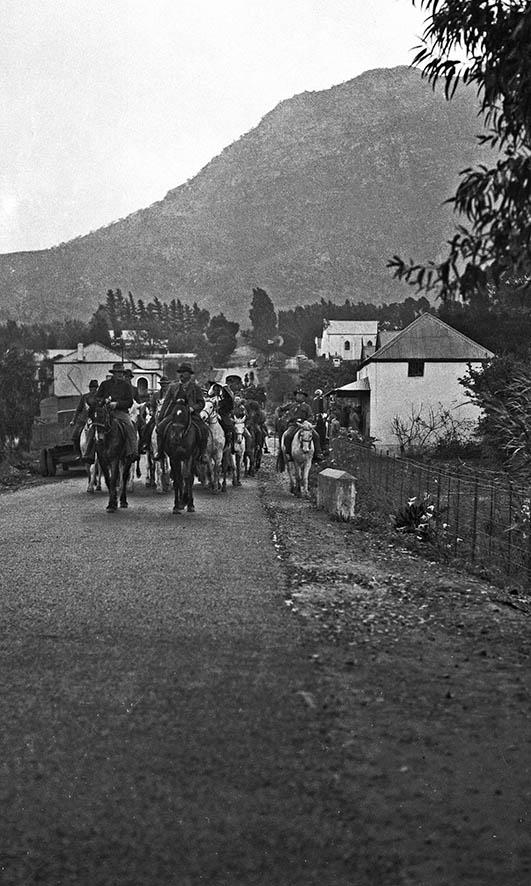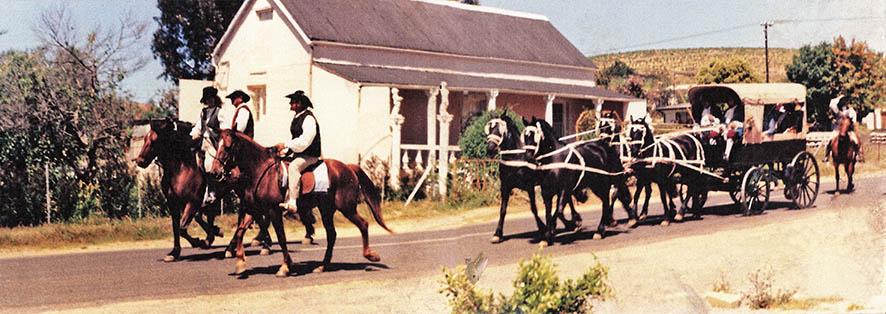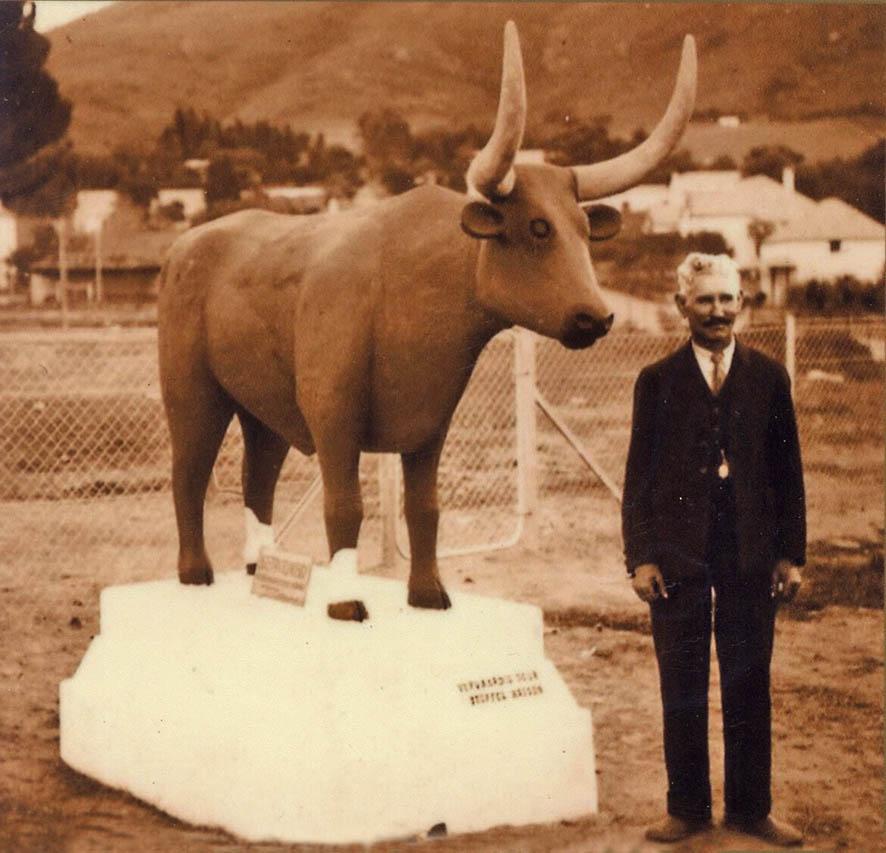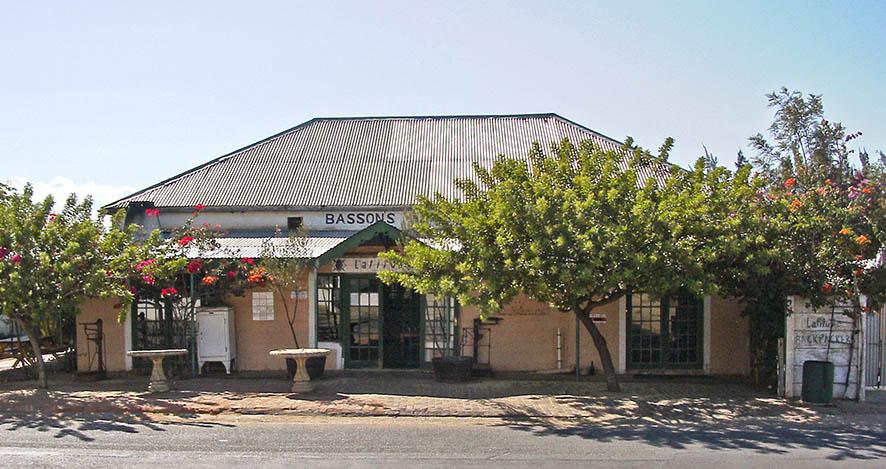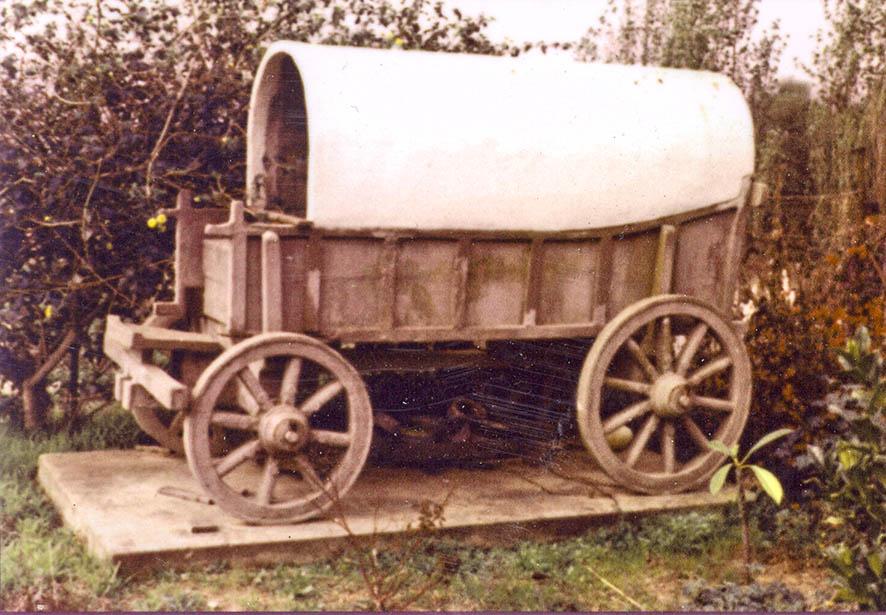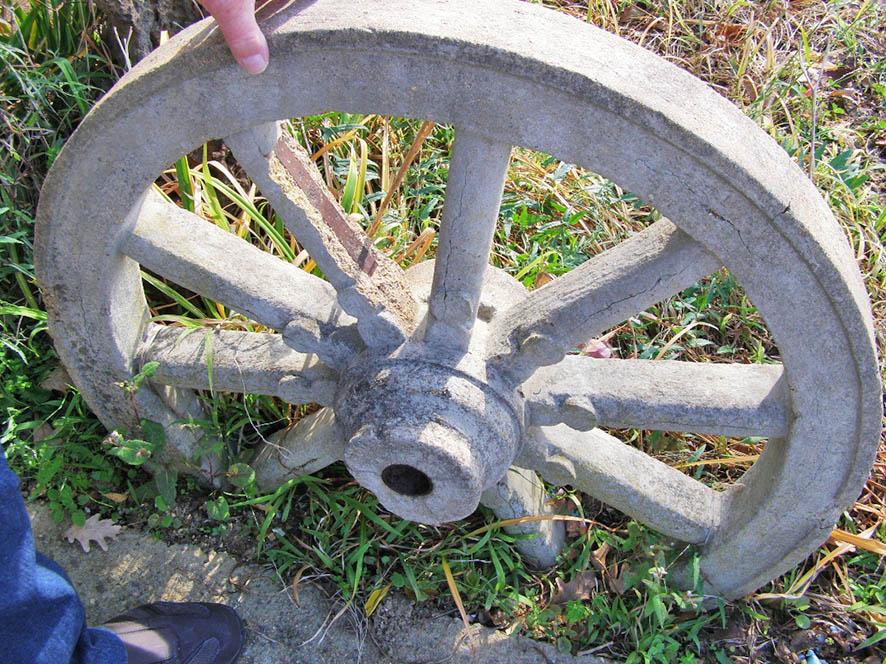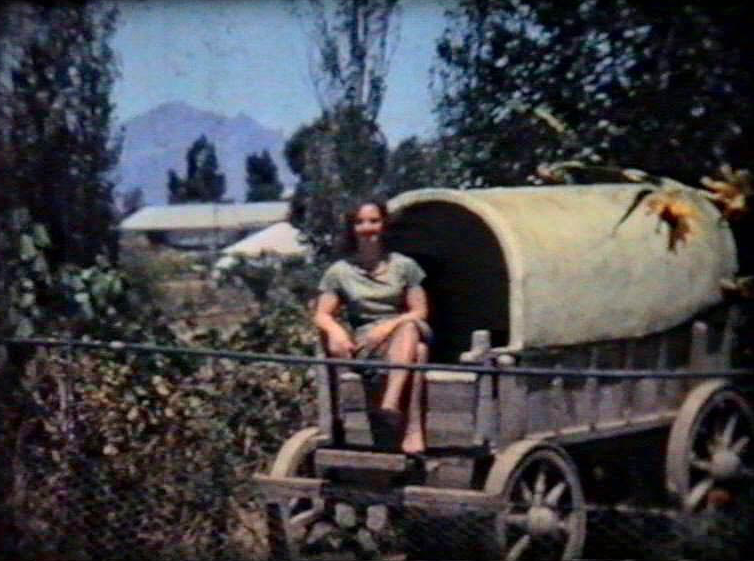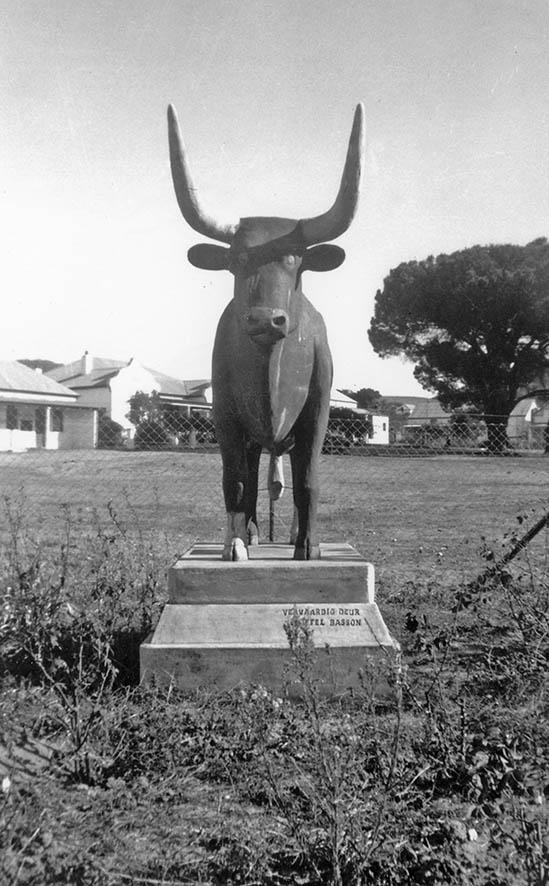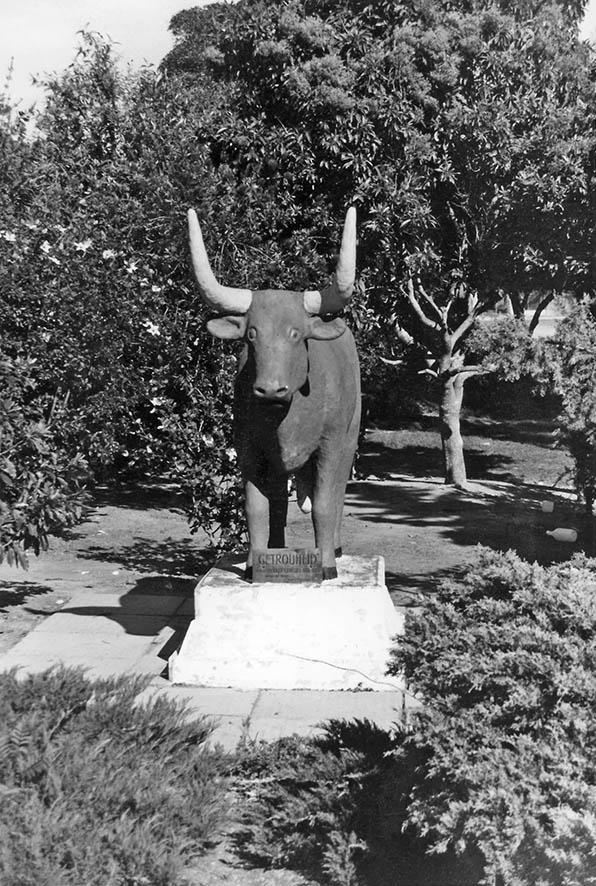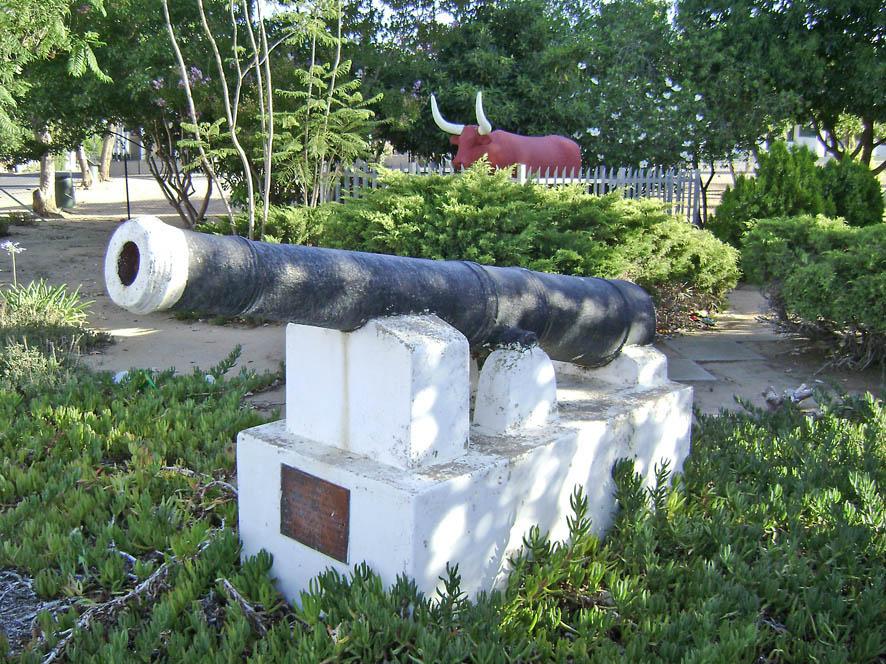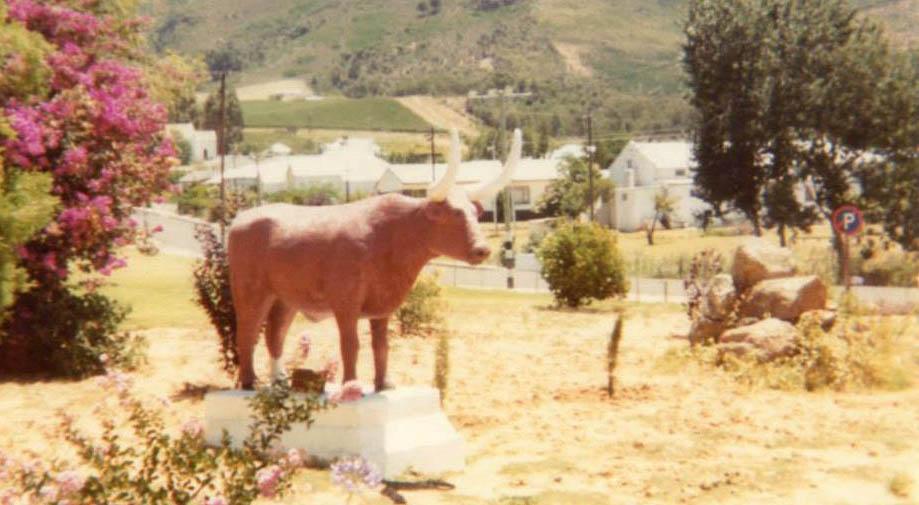
Disclaimer: Any views expressed by individuals and organisations are their own and do not in any way represent the views of The Heritage Portal. If you find any mistakes or historical inaccuracies, please contact the editor.
On 8 August 1938, eighty years ago, a re-enactment of the Great Trek began at the foot of the Jan van Riebeeck statue in Cape Town, wending its way through many small towns and villages en route.
One of those was Riebeek Kasteel in the Swartland, where a team of riders with wagons was greeted enthusiastically, as they were everywhere they traversed.
A troupe is seen in the Main Street just below the open area which at one stage was a market square*.
A far lesser known version was enacted again in 1988 in an attempt by the then National Party to raise a new wave of Afrikaner nationalism, but if anything it recalled divisions during the original trek and was not considered a success. However, a group of riders with their wagons still appeared in Riebeek Kasteel.
A scene from the 1988 re-enactment (Elizabeth Richardson)
The village, however, was to have a different take on establishing a memorial, in that one of the residents decided to create an ox, in cement, to commemorate the role of the animal in the great venture.
The red ox on the square (Die Plein) in Riebeek Kasteel was built by Christoffel Basson, 1878-1946, in 1938. He apparently had a garage and repair workshop located in Sarel Cilliers Street, today a restaurant.
Christoffel Basson standing next to his creation (Basson family)
Basson's name is still evident in this photograph from the early 2000s (Chris Murphy)
A wagon, also made entirely of cement, originally existed but due to logistical difficulties in moving it, never made it onto the square. All that remains is a wheel which still stands before a house in one of the streets in the village.
The wagon never made it to the square (Basson family)
All that remains is a wheel (Basson family)
A grandson, Jaco Basson, described, "When Grandmother Anna sold the property, she donated the wagon, which was still in good condition, to the school (this is how I remember it) – I believe that today there is not much left of the wagon – the story is that when the wagon was built in the old days, Christoffel did not use the correct iron to re-enforce the cement (or maybe the steel was not that good those days) and that is why the wagon fell apart. Last time I saw it, it was still in good condition – we used to play on it in the garden where it was constructed".
Rietta Basson playing on the ox wagon (Basson family)
From the 1940s until 1983 the red ox stood as a lonely sentinel on the village square, but by 1998 the established vegetation provided a shelter of sorts. Unfortunately vandalism in the form of graffiti became part of the story and ultimately the red ox had to have protection in the form of a palisade fence. A cannon, one of those used to warn farmers of ship arrivals at the Cape, too was placed on the square in 1938, donated by local farmer Mr J van der Merwe of Swartdam.
Red Ox circa 1940s
Red ox in 1998 (Chris Murphy)
A cannon was placed on the square in 1938 (Chris Murphy)
*For information, The Square in Riebeek Kasteel has this year been the subject of a Heritage Impact Assessment for an upgrade, and a permit has been issued by heritage Western Cape for this, depending on final comments from IAPs.
Chris was a member and subsequent chair of the Swartland Heritage Foundation. He has also completed the Urban and Architectural Conservation course at UCT. At present he is the chair of the West Coast Museum Forum.
Comments will load below. If for any reason none appear click here for some troubleshooting tips. If you would like to post a comment and need instructions click here.

